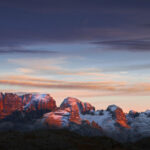Those of us who live in warmer climates often tend to look at the rocky ice-fields of Alaska (or Canada, or Russia) and wonder, “Why anyone would choose to live in such a frigid and hostile environment?”. Today’s featured video almost makes the question sound stupid, as it shows us the breathtaking beauty to be found within the Arctic circle. This short film is about “the Aurora Hunter” Todd Salat, a dedicated nature photographer who pursued his passion for the visible cosmos straight up to the Great White North, where he spends his life photographing the elusive aurora borealis:
From its very beginnings, the strength and beauty of photography was in its unique ability to document moments in time which could be captured in no other way; it rescues reality from the realm of stories and myths and turns it into something we can observe over and over in our collective efforts to communicate and understand the natural world.
Growing up in Iowa, Salat was fascinated with the stars and their immovable dominance over the night. As any astrophotographer knows, the best skyscapes are to be found as far away from human civilization as possible, untouched by the sprawling metropolitan light pollution that drowns out the view above us. Even compared to Iowa, Alaska is a holy grail of isolation, and home to some of the most awesome night skies on the planet. This is especially true on those lucky eves that the sun’s flares reflect through the Earth’s magnetic field, causing the Northern Light show which captured Salat’s imagination and inspired him to leave his midwestern life and follow the cosmic curtains to the snowshine state.
Auroras make a fantastic subject, if you’re lucky enough to witness them. Salat uses wide-angle lenses to emphasize the epic scale of the Alaskan sky and long exposures to show the softness and gentle swirling motion of the glow. As with any other type of landscape, many of his shots are given weight by the inclusion of a main focal point that provides context and juxtaposition to the light show going on behind it. This type of photography requires a tough camera (one that can operate in sub-freezing temperatures – he appears to be using a Nikon D800), a sturdy tripod, and a lot of patience.
The most important lesson I take from this story is about the artist’s complete and unwavering dedication to his craft, and the pure joy and excitement that he finds in practicing it. Once a photographer gives up their day job as Salat did, it’s very easy for their approach to become less personal and more practical, as it morphs from a fun hobby into something that puts food on the table. Salat’s enthusiasm teaches us that the greatest images don’t come from the fanciest gear or the most Instagram followers, but from an earnest and humble appreciation for the world around you, and for the unique opportunity that we’re given to grab hold of it.
Like This Article?
Don't Miss The Next One!
Join over 100,000 photographers of all experience levels who receive our free photography tips and articles to stay current:









Leave a Reply